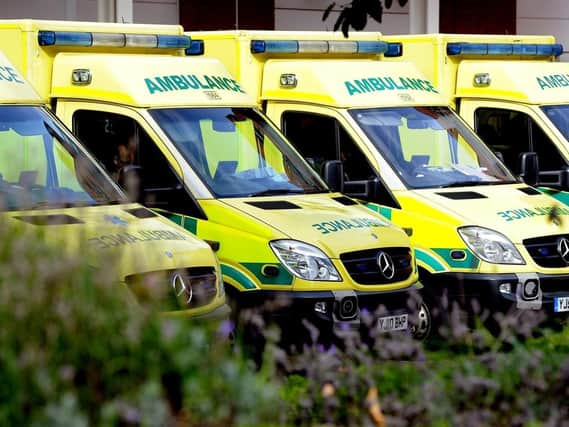Care Quality Commission '“ Yorkshire Ambulance Service improves after criticism


The Care Quality Commission (CQC) reviewed 20 councils, hospitals and ambulance trusts in different parts of the country in the winter of 2017. Sheffield was chosen because performance was not as good as many other parts of the country on a number of measures.
The CQC acted after the Department of Health and Social Care said older people in Sheffield were more likely than most places to be admitted to hospital.
Advertisement
Hide AdAdvertisement
Hide AdIts review found that the percentage of 999 calls resolved by Yorkshire Ambulance Service NHS Trust (YAS) with telephone advice and the percentage of 999 calls attended by YAS without transferring to hospital was consistently below the England average. This was over the period between August 2016 and July 2017
In July 2017, only nine per cent of emergency calls received by YAS were resolved with telephone advice, below the England average of 10 per cent.
It also found almost a third of calls attended by YAS were managed without transferring to hospital, again below the England average of 38 per cent.
The review said: 'This impacted upon the number of people using alternative services and attending the A&E department.
Advertisement
Hide AdAdvertisement
Hide Ad'Ambulance handover times at A&E did not always meet their targets which impacted upon turnaround times to respond to other emergency calls.
'People told us of long waiting times for ambulance transport and being treated in A&E which impacted upon their health and wellbeing.
'Ambulance turnaround times were not always responsive as handover times in A&E sometimes exceeded an hour, which impacted upon the department and ambulance crew.'
YAS has made changes with a new rapid assessment process to enable a smoother and more effective triage system.
Advertisement
Hide AdAdvertisement
Hide AdThere is also a self-handover for people who have been assessed as 'fit to sit' to make handover time more effective and responsive. Frontline staff shared a vision of 'why not home, why not today?'
The review adds: 'Frontline staff told us that relationships between the ambulance crew and A&E staff were building so they could work on 'fit to sit' handovers, which in turn would improve handover times.
'There had been some new initiatives in A&E where specific pathways had been defined for a number of conditions to achieve better outcomes for people, and staff were working on making pathways more person centred.' Â
Yorkshire Ambulance Service NHS Trust says it currently performs well against national standards and is continuing to develop services in line with the new Ambulance Response Programme.
Advertisement
Hide AdAdvertisement
Hide AdA spokesman said: 'We work closely with hospital trusts and other partners to ensure that there are effective patient pathways and that ambulance handovers are as efficient as possible.
'Handover times at emergency departments have improved over the last 12 months through this collaborative work. We continue to work with hospital teams to ensure that further progress is made, drawing on best practice locally and nationally.'
The CQC report can be viewed here https://www.cqc.org.uk/sites/default/files/20180522_local_system_review_sheffield.pdf